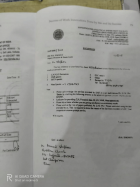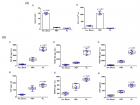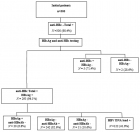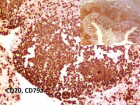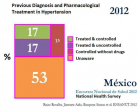Abstract
Thesis
Analysis of Microbial Diversity and Community Structure in the Rhizosphere of Cigar Tobacco in Different Agroecological Zones
Junru Shen, Guoyou He, Xubing Tang*, Longhui Ren, Bao Fang, Anzhong Zhen, Tao Yang* and Chuisi Kong*
Published: 13 September, 2023 | Volume 7 - Issue 3 | Pages: 097-106
To reveal the influence of ecological zones on the structure of microbial communities in cigar rhizosphere soils, Yunnan's cigar tobacco production region was first divided into three ecological zones. Soil samples were collected at maturity and the community structure of fungi and bacteria in the rhizosphere soil was analyzed using 18S rRNA and 16S rRNA high-throughput sequencing techniques. The results showed that the dominant fungi were Ascomycota, Mortrellomycota, and Basidiomycota, and the dominant bacteria were Ascomycota and Proteobacteria. The dominant genera and relative abundances of fungi and bacteria differ at the genus level. Ecoregions may affect the community structure and distribution of fungal and bacterial diversity in the rhizospheric soil of cigars at maturity, which may provide a theoretical basis for the selection of high-quality cigar-producing regions in the future.
Read Full Article HTML DOI: 10.29328/journal.jpsp.1001113 Cite this Article Read Full Article PDF
Keywords:
Ecological region; Cigar tobacco; Rhizosphere soil; Fungal community structure; Bacterial community structure
References
- Yang XY, Jin DM, Song SX. Adaptability evaluation of introduced cigar tobacco varieties in Sichuan Wanyuan tobacco-growing area. Crop Research. 2018; 32(6):504-540.
- Zhang J W. GIS-based ecological suitability assessment of main cigar growing areas in Sichuan Province. Henan Agricultural University. 2021.
- Deng YG. Time to the east. Research progress on ecological adaptability and cultivation techniques of cigar-tomato varieties. Journal of Jiangxi Agriculture. 2021; 33 (01):60-66.
- Ma GM, Tan T, Yang D. Study on pathogen the identification of cigar root-knot nematode disease and control effect of biogenic ammonia fumigation in Jiangcheng, Yunnan. Journal of Yunnan University (Natural Science Edition). 2023;45 (01): 211-217.
- Lin BS, Gao HJ, Zheng Q, Cai B. Comparative study on climatic conditions of main cigar producing areas at home and abroad. Journal of Tropical Crops. 2022; 1:15.
- Qin YQ, Li AJ, Fan JY. Discussion on production technology of high-quality cigar coat. Journal of Jiangxi Agriculture. 2012; 07:101-103.
- Wang HY, Zuo XJ, Sun FS. Research progress of cigar wrapper. China Tobacco Science. 2009; 05:71-76.
- Tao J, Liu HB, Xin YH. Characteristics of main ecological factors in high-quality cigar growing area of Pinar del Rio Province, Cuba. Chinese Journal of Tobacco. 2016; 22 (04):62-69.
- Li AJ, Qin YQ, Fan JY. Advantage analysis and countermeasures of developing cigar tobacco production in Sichuan Province. Anhui Agricultural Sciences. 2013; (07): 3188-3189, 3228.
- Gao WK, Li MS, Li C. Analysis of fungal community structure and ecological characteristics in rhizosphere soil of flue-cured tobacco at different altitudes. Jiangsu Agricultural Science. 2022; 50 (08):221-227.
- Zhou YJ, Jia X, Zhao YH. Altitudinal distribution pattern of fungal community in Huoditang, Qinling Mountains. Chinese Journal of Applied Ecology. 2021; 32 (7):2589-2596.
- Liu Y. Study on the Difference of Soil Microbial Community in Paddy Field in Different Ecological Regions and the Mechanism of Deep Tillage. Henan Agricultural University. 2022.
- Zhuo LX. Diversity analysis of soil bacteria and nitrogen-fixing microorganisms in different ecological regions of Shaanxi. Northwestern University. 2017.
- Yuan YW. Study on soil fertility status of tobacco-growing at different altitudes in Zhangjiajie tobacco-growing area. Changsha: Hunan Agricultural University. 2014; 40-42.
- Kyselková M, Kopecký J, Frapolli M, Défago G, Ságová-Marecková M, Grundmann GL, Moënne-Loccoz Y. Comparison of rhizobacterial community composition in soil suppressive or conducive to tobacco black root rot disease. ISME J. 2009 Oct;3(10):1127-38. doi: 10.1038/ismej.2009.61. Epub 2009 Jun 25. PMID: 19554036.
- Callahan BJ, McMurdie PJ, Rosen MJ, Han AW, Johnson AJ, Holmes SP. DADA2: High-resolution sample inference from Illumina amplicon data. Nat Methods. 2016 Jul;13(7):581-3. doi: 10.1038/nmeth.3869. Epub 2016 May 23. PMID: 27214047; PMCID: PMC4927377.
- Louca S, Parfrey LW, Doebeli M. Decoupling function and taxonomy in the global ocean microbiome. Science. 2016 Sep 16;353(6305):1272-7. doi: 10.1126/science.aaf4507. PMID: 27634532.
- Chu H, Gao GF, Ma Y, Fan K, Delgado-Baquerizo M. Soil Microbial Biogeography in a Changing World: Recent Advances and Future Perspectives. mSystems. 2020 Apr 21;5(2):e00803-19. doi: 10.1128/mSystems.00803-19. PMID: 32317392; PMCID: PMC7174637.
- Zhou Z H. Identification of main ecological factors and suitable interval extraction for quality difference of tobacco leaves in Liangpan tobacco-growing areas. Chengdu. Journal of Sichuan Agricultural University. 2017.
- He HB, Li WX, Zhang YW. Effects of Italian ryegrass residues as green manure on soil properties and bacterial communities under an Italian ryegrass(Lolium multiflorum L.)rice(Oryza sativa L.) Soil and tillage research. 2020; 196:104487.
- Merckx VSFT, Gomes SIF, Wapstra M. The biogeographical history of the interaction between mycoheterotrophic Thismia (Thismiaceae) plants and mycorrhizal Rhizophagus (Glomeraceae) fungi. Journal of Biogeography. 2017; 44(8): 1869-1879.
- Ma Q, Xia DS, Wu ZH. Diversity analysis of soil fungi in western Inner Mongolia. Science Technology and Engineering. 2020; 20(35): 14447-14454.
- Frᶏc M, Hannula S E, Bełka M, et al. Frąc M, Hannula SE, Bełka M, Jędryczka M. Fungal Biodiversity and Their Role in Soil Health. Front Microbiol. 2018 Apr 13;9:707. doi: 10.3389/fmicb.2018.00707. PMID: 29755421; PMCID: PMC5932366.
- Žifčáková L, Větrovský T, Howe A, Baldrian P. Microbial activity in forest soil reflects the changes in ecosystem properties between summer and winter. Environ Microbiol. 2016 Jan;18(1):288-301. doi: 10.1111/1462-2920.13026. Epub 2015 Oct 14. PMID: 26286355.
- Liu Z, Xu YP, Wang XL. Analysis of fungal community structure and diversity in rhizosphere soil of alfalfa in Heilonggang. Jiangsu Agricultural Science. 2021; 49(10): 197-201.
- Labandeira CC, Wappler T. Arthropod and Pathogen Damage on Fossil and Modern Plants: Exploring the Origins and Evolution of Herbivory on Land. Annu Rev Entomol. 2023 Jan 23;68:341-361. doi: 10.1146/annurev-ento-120120-102849. PMID: 36689301.
- Liu C, Cai Q, Liao P. Effects of Fallopia multiflora–Andrographis paniculata intercropping model on yield, quality, soil nutrition and rhizosphere microorganisms of multiflora. Plant and Soil. 2021; 467: 465-481.
- Qiu Jie, Hou Yiling, Xu Lili. High-throughput sequencing analysis of bacterial diversity in rhizosphere soil of different mulberry trees. Southern Agricultural Journal. 2019; 50(3):585-592.
- Xi K, Liu M, Wang M. Effects of Seasonal Grazing on Microbial Community Structure in Rhizosphere Soil of Stellera chamaejasme in Gannan Alpine Meadow. International Journal of Social Science and Education Research. 2023; 6(6): 362-372.
- Revilla P, Anibas CM, Tracy WF. Sweet Corn Research around the World 2015–2020. Agronomy. 2021; (11):534.
- Kang LY, Liu ZB, Ou LJ. Effects of capsicum planting on microbial diversity in rhizosphere soil. Journal of Hunan Agricultural University (Natural Science Edition). 2018; 44(2): 151-156, 175.
- Zhu AQ. Effect of ecological factors on quality of flue-cured tobacco in Yuxi area. Nanjing University of Information Science and Technology. 2021.
- Tang YJ, Zhang JP. Preliminary classification of quality ecological types of main flue-cured tobacco production bases in Shanghai. China Tobacco Science. 2006; 27(3): 1-5.
- Yang C. Characteristics of main ecological factors and their effects on yield and quality of flue-cured tobacco in Chongqing tobacco-growing areas. Southwest University. 2015.
- Zhu H, Liang M, Song WJ. Effects of climatic factors on quality and style characteristics of flue-cured tobacco. Jiangsu Agricultural Sciences. 2017; 45(5): 63-69.
- Ju YQ, Chen ZH, Ma D. Analysis on climate the similarity of high-quality flue-cured tobacco growing areas in central and northern subtropics of China. Chinese Journal of Applied Meteorology. 2022; 33 (06):736-747.
- Miki LWX, Li WC. Effects of different light intensity on photosynthetic physiology and biochemistry of two flue-cured tobacco seedlings. Molecular Plant Breeding. 2023; (1): 17.
- Guo JH, Shen JP, Zhang Shixiang. Similarity analysis of physical properties between imported flue-cured tobacco and flue-cured tobacco grown in China. China Tobacco Science. 2018; 39 (01): 91-96.
- Zhao JL, Wang XG, Zhang XLi. Study on ecological adaptability of new flue-cured tobacco varieties in western Henan Province. Hunan Agricultural Sciences. 2021; (03): 6-10.
- Wang J, Li JZ, Ji GF. Effects of ecological deep planting techniques on growth, yield and quality of flue-cured tobacco in Lingbao tobacco-growing area. Anhui Agricultural Science. 2022; 50 (13): 30-37.
- Zhong JH. Effects of different soil and fertilizer application on yield and quality of flue-cured tobacco. Journal of Jiangxi Agriculture. 2019; 31 (04): 69-76.
- Yan J, Shi RY, Wang CJ. Effects of different amendments on acid tobacco fields and growth of flue-cured tobacco. Soils. 2023; 55 (03): 612-618.
Figures:

Figure 1

Figure 2
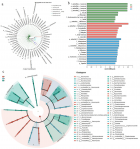
Figure 3

Figure 4

Figure 5
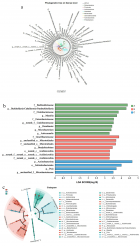
Figure 6
Similar Articles
-
Isolation and biochemical characterization of Plant Growth Promoting (PGP) bacteria colonizing the rhizosphere of Tef crop during the seedling stageZerihun Tsegaye*,Birhanu Gizaw,Genene Tefera,Adey Feleke,Solomon Chaniyalew,Tesfaye Alemu,Fasil Assefa . Isolation and biochemical characterization of Plant Growth Promoting (PGP) bacteria colonizing the rhizosphere of Tef crop during the seedling stage. . 2019 doi: 10.29328/journal.jpsp.1001027; 3: 013-027
-
Analysis of Microbial Diversity and Community Structure in the Rhizosphere of Cigar Tobacco in Different Agroecological ZonesJunru Shen, Guoyou He, Xubing Tang*, Longhui Ren, Bao Fang, Anzhong Zhen, Tao Yang*, Chuisi Kong*. Analysis of Microbial Diversity and Community Structure in the Rhizosphere of Cigar Tobacco in Different Agroecological Zones. . 2023 doi: 10.29328/journal.jpsp.1001113; 7: 097-106
Recently Viewed
-
Mechanism of Small Molecule Inhibitors of PhagocytosisMelika Loriamini, Melissa M Lewis-Bakker, Beth Binnington, Lakshmi P Kotra, Donald R Branch*. Mechanism of Small Molecule Inhibitors of Phagocytosis. J Hematol Clin Res. 2023: doi: 10.29328/journal.jhcr.1001022; 7: 011-014
-
Advances in Physiological Research: Consideration on Arterial Hypercapnia in Acute Cardiogenic Pulmonary Edema (ACPE)Andrea Bellone*. Advances in Physiological Research: Consideration on Arterial Hypercapnia in Acute Cardiogenic Pulmonary Edema (ACPE). Arch Case Rep. 2024: doi: 10.29328/journal.acr.1001108; 8: 116-117
-
Jaw Subluxation as a Complication of Tardive DyskinesiaDiana Paleacu Kertesz*. Jaw Subluxation as a Complication of Tardive Dyskinesia. Arch Case Rep. 2024: doi: 10.29328/journal.acr.1001112; 8: 131-133
-
Sleep Disorders and Sleep Studies Case ReportsAjay B Gadicha*,Vijay B Gadicha,Mayur S Burange,ZI Khan. Sleep Disorders and Sleep Studies Case Reports. Arch Case Rep. 2024: doi: 10.29328/journal.acr.1001114; 8: 146-151
-
Evaluation of Biostimulants Based on Recovered Protein Hydrolysates from Animal By-products as Plant Growth EnhancersH Pérez-Aguilar*, M Lacruz-Asaro, F Arán-Ais. Evaluation of Biostimulants Based on Recovered Protein Hydrolysates from Animal By-products as Plant Growth Enhancers. J Plant Sci Phytopathol. 2023: doi: 10.29328/journal.jpsp.1001104; 7: 042-047
Most Viewed
-
Evaluation of Biostimulants Based on Recovered Protein Hydrolysates from Animal By-products as Plant Growth EnhancersH Pérez-Aguilar*, M Lacruz-Asaro, F Arán-Ais. Evaluation of Biostimulants Based on Recovered Protein Hydrolysates from Animal By-products as Plant Growth Enhancers. J Plant Sci Phytopathol. 2023 doi: 10.29328/journal.jpsp.1001104; 7: 042-047
-
Sinonasal Myxoma Extending into the Orbit in a 4-Year Old: A Case PresentationJulian A Purrinos*, Ramzi Younis. Sinonasal Myxoma Extending into the Orbit in a 4-Year Old: A Case Presentation. Arch Case Rep. 2024 doi: 10.29328/journal.acr.1001099; 8: 075-077
-
Feasibility study of magnetic sensing for detecting single-neuron action potentialsDenis Tonini,Kai Wu,Renata Saha,Jian-Ping Wang*. Feasibility study of magnetic sensing for detecting single-neuron action potentials. Ann Biomed Sci Eng. 2022 doi: 10.29328/journal.abse.1001018; 6: 019-029
-
Physical activity can change the physiological and psychological circumstances during COVID-19 pandemic: A narrative reviewKhashayar Maroufi*. Physical activity can change the physiological and psychological circumstances during COVID-19 pandemic: A narrative review. J Sports Med Ther. 2021 doi: 10.29328/journal.jsmt.1001051; 6: 001-007
-
Pediatric Dysgerminoma: Unveiling a Rare Ovarian TumorFaten Limaiem*, Khalil Saffar, Ahmed Halouani. Pediatric Dysgerminoma: Unveiling a Rare Ovarian Tumor. Arch Case Rep. 2024 doi: 10.29328/journal.acr.1001087; 8: 010-013

HSPI: We're glad you're here. Please click "create a new Query" if you are a new visitor to our website and need further information from us.
If you are already a member of our network and need to keep track of any developments regarding a question you have already submitted, click "take me to my Query."






